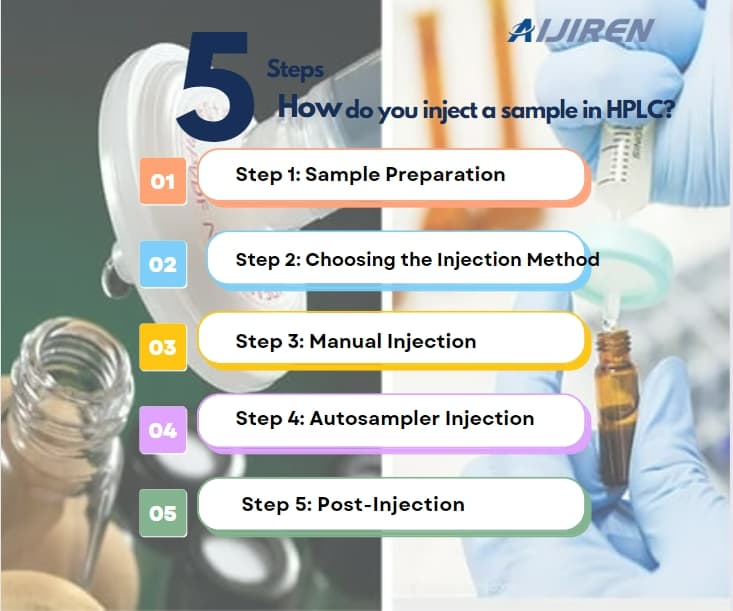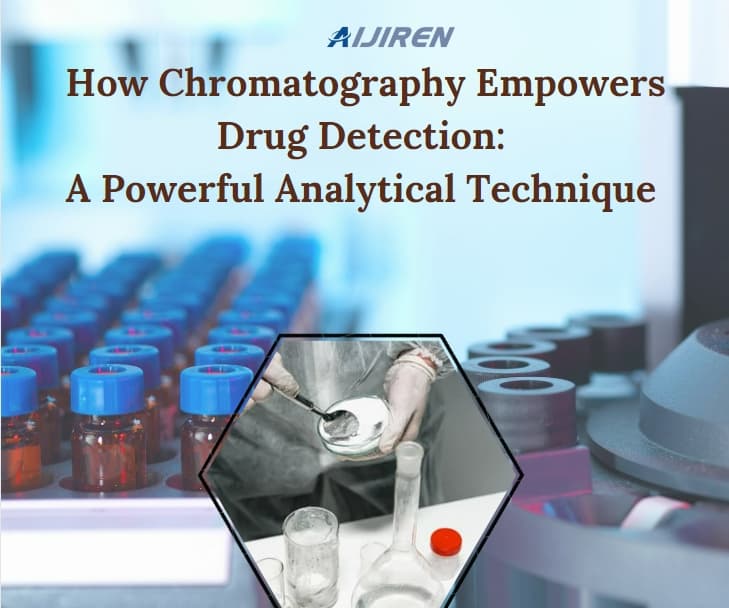What Size Syringe Filter for HPLC? And How to Use It?
Syringe filters provide high flow rates and loading capacities, making them ideal for sample preparation for HPLC and ion chromatography. Their use extends column lifetime significantly, while their variety of membrane types and pore sizes makes them a versatile choice. Get the most out of your chromatography data with the right filter. When choosing a syringe filter, three main factors dictate your syringe filter selection: sample volume, potential particulate size, and filter membrane compatibility.
What Size Syringe Filter for HPLC?
- 1.Diameter of the Syringe Filter and Sample Volume
Sample volume dictates the diameter of the syringe filter. Intuitively, larger diameter syringe filters (e.g., 30mm syringe filters) filter larger sample sizes because of their wide cross-sectional membrane area, which offers increased filtration speed over the smaller diameter filters.
13mm syringe filters are a popular choice for most chromatography methods and typically chosen when sample volume is less than 10mL.
- 2.Syringe Filter Pore Size
Two porosities of membranes are available for our syringe filters, 0.45 micron and 0.2 micron. The 0.45 micron pore is recommended to protect most HPLC instrumentation and columns from detrimental particulates. The newer trend is for chromatographers to develop assays with lower levels of detection, which in turn leads to columns of smaller particle size and the HPLC tubing internal diameter to get smaller and smaller. This trend to go smaller means that chromatographers need to filter their samples to remove even smaller particles; therefore, in these scenarios, it is recommended to use the 0.2 micron pore size syringe filter.
- 3.Syringe Filter Membrane Options
| Membrane Material | Characteristic |
| PTFE | hydrophilic or hydrophobic, resistant to strong acid, strong alkali and high temperature, suitable for the filtration of strong corrosive solution, organic solution and gas. |
| PVDF | hydrophilic or hydrophobic, low protein binding, suitable for general biological filtration, not suitable for filtration of highly corrosive liquids. |
| Nylon | hydrophilic, high protein binding, suitable for protein-free aqueous and organic solutions, resistant to alcohol and DMSO. |
| PES | hydrophilic, low protein binding, high flow rate, high porosity, not resistant to organic |
| CA | hydrophilic, low protein binding, suitable for the filtration of proteins and aqueous solutions in biological samples, such as serum culture medium filtration. |
| MCE | Excellent contrast for easier particle detection, high degree of internal surface area, Higher dirt loading capacity, high flow rates, Thermally stable |
How to Use the Syringe Filter?
Proper usage of the syringe filter is crucial to maintain its efficiency and prevent sample contamination. Follow these steps for optimal results:
- 1.Syringe Selection: Use a syringe with a luer lock connection to ensure a secure fit with the syringe filter. Luer lock connections prevent any potential leakage during the filtration process.
- 2.Attaching the Filter: Attach the syringe filter to the syringe by twisting it onto the luer lock connection. Ensure a tight seal to prevent any sample leakage or bypass.
- 3.Pre-Wetting the Filter: Before filtering your sample, it is advisable to pre-wet the filter with a suitable solvent. This step aids in removing any remaining air and increases the filtration efficiency. Simply draw the solvent into the syringe and expel it through the filter, ensuring the entire membrane is wetted.
- 4.Filtering the Sample: Carefully load your sample into the syringe. Apply gentle pressure on the syringe plunger to push the sample through the filter. Avoid applying excessive force, as it may damage the filter or cause sample breakthrough.
- 5.Disposal: After filtration, properly dispose of the used syringe filter and any waste materials generated during the process. Follow your organization’s guidelines and local regulations for the safe disposal of laboratory waste.
Selecting the right syringe filter and using it correctly are essential steps in ensuring reliable and precise laboratory results. Consider the membrane material, pore size, filtration volume, and flow rate when choosing a syringe filter. Remember to use a syringe with a luer lock connection, pre-wet the filter, apply gentle pressure during filtration, and dispose of the used filter properly. By following these guidelines, you can optimize the efficiency and accuracy of your sample filtration processes.
Back to List
-
 下午2:56How do you inject a sample in HPLC?
下午2:56How do you inject a sample in HPLC? -
 上午9:04How Chromatography Empowers Drug Detection: A Powerful Analytical Technique
上午9:04How Chromatography Empowers Drug Detection: A Powerful Analytical Technique -
 下午5:01Navigating Micro Inserts for HPLC Vials: A Comprehensive Guide
下午5:01Navigating Micro Inserts for HPLC Vials: A Comprehensive Guide -
.jpg) 下午5:14Common faults and solutions of automatic samplers(1)
下午5:14Common faults and solutions of automatic samplers(1) -
 下午5:08Ensuring Sample Integrity: Navigating EPA Storage Vials Stability Guidelines
下午5:08Ensuring Sample Integrity: Navigating EPA Storage Vials Stability Guidelines

